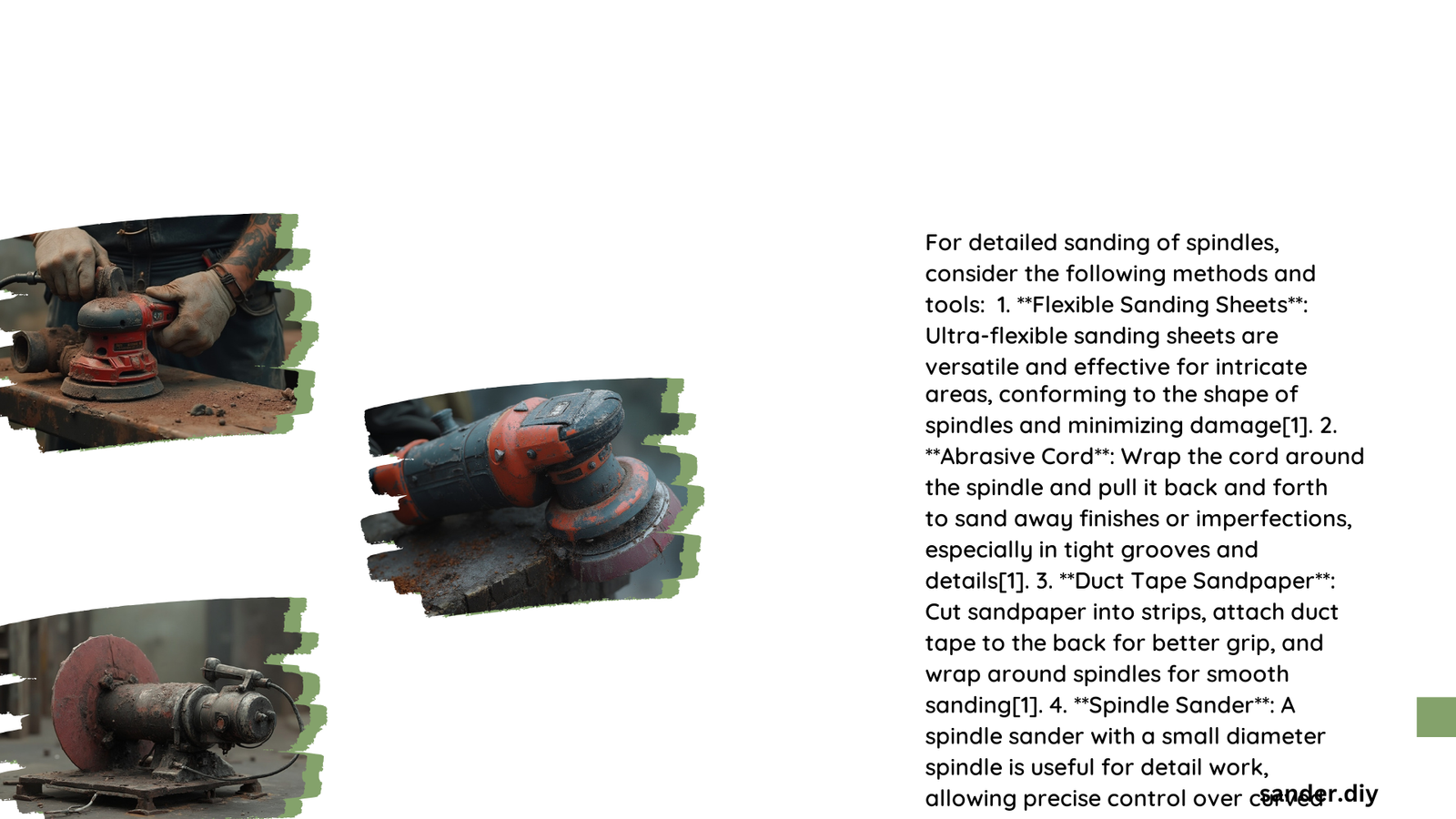A detail sander for spindles is a specialized tool designed to sand intricate, curved surfaces like balusters, chair legs, and other decorative woodwork. These sanders typically feature compact designs, versatile attachments, and the ability to reach tight spaces. They are essential for achieving smooth finishes on complex wooden structures, offering precision and control that larger sanders can’t match.
What Are the Key Features of a Detail Sander for Spindles?
Detail sanders for spindles come with specific features tailored to their specialized use:
- Compact Size: Allows for easy maneuvering in tight spaces
- Versatile Attachments: Enables sanding of various curved and contoured surfaces
- Variable Speed Control: Provides flexibility for different materials and finishes
- Dust Collection System: Keeps the work area clean and improves visibility
- Ergonomic Design: Reduces fatigue during prolonged use
One notable example is the Ryobi 18V One+ Corner Cat Finish Sander:
- Sander Type: Orbital
- Power Source: Cordless, li-ion rechargeable battery
- Weight: 1.54 pounds (without battery)
- Performance: 11,000 OPM, efficient corner and edge sanding
Which Attachments Are Essential for Spindle Sanding?

Different attachments cater to various spindle shapes and sizes:
Skil 1.2 Amp Multi-Sander SR232301 Attachments:
- Finger Pad: For narrow spots
- Large Mouse Pad: General sanding tasks
- Small Mouse Pad: Tighter spaces
- Contour Sanding Attachment: Contoured rails
Black+Decker Mouse Detail Sander BDEMS600 Attachments:
- Triangular Mouse Base: Tight spots and corners
- Detail Finger Attachment: Between chair rails and narrow areas
These attachments accommodate round, tapered, and contoured surfaces, primarily designed for wood but adaptable to other materials with appropriate sandpaper.
How to Choose the Right Grit for Spindle Sanding?
Selecting the correct grit is crucial for achieving the desired finish:
| Grit Type | Grit Range | Purpose |
|---|---|---|
| Coarse | 80-100 | Initial sanding, removing rough wood grain |
| Medium | 120-150 | Smoothing after coarse sanding |
| Fine | 220-240 | Final sanding for smooth finish |
| Extra Fine | 320+ | Polishing and buffing |
What Are Common Challenges in Spindle Sanding?
- Accessibility Issues:
- Use narrow attachments like finger pads
-
Opt for cordless sanders for better maneuverability
-
Achieving Uniformity:
- Apply light, consistent pressure
- Work in small sections
-
Change sandpaper frequently
-
Time Management:
- Sanding time varies based on spindle complexity and desired finish
- Can range from a few hours to several hours for intricate work
How to Select the Best Detail Sander for Spindles?
Consider these factors when choosing a detail sander:
- Power Source: Corded for continuous use or cordless for portability
- Weight: Lighter sanders reduce fatigue during extended use
- Attachments: Variety of shapes for different spindle profiles
- Dust Collection: Efficient systems improve work quality and cleanliness
- Brand Reputation: Choose reputable brands for reliability and support
What Are the Best Practices for Spindle Sanding?
- Start with coarse grit and progressively move to finer grits
- Sand in the direction of the wood grain when possible
- Clean the surface between grit changes
- Use a tack cloth to remove dust before applying finish
- Wear appropriate safety gear, including dust mask and eye protection
How to Maintain Your Detail Sander for Spindles?
- Clean the sander after each use
- Check and replace worn attachments regularly
- Keep the dust collection system clear
- Store in a dry place to prevent moisture damage
- Follow manufacturer’s guidelines for battery care (if cordless)
By following these guidelines and choosing the right detail sander for spindles, you can achieve professional-quality finishes on even the most intricate woodwork projects.
References:
1. Bob Vila – The Best Detail Sanders, Tested & Reviewed
2. Raddadbuilds – Best Oscillating Spindle Sander – Rated and Reviewed
3. The Home Depot – Best Wood Sanders for Your Project
